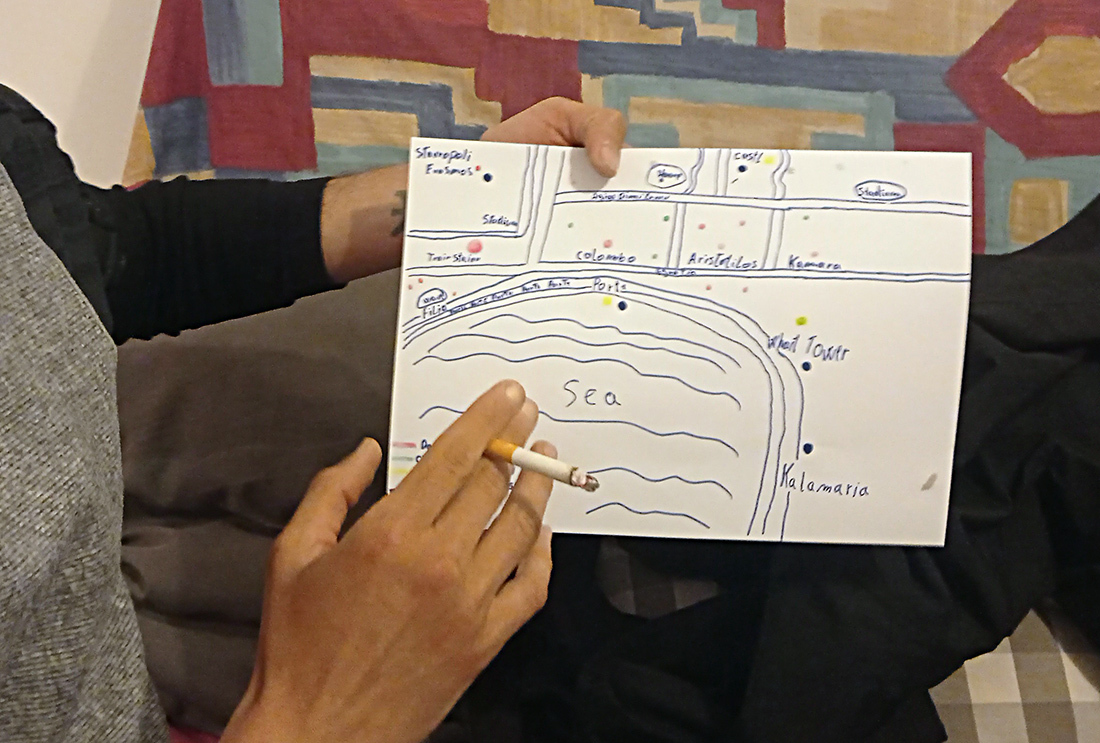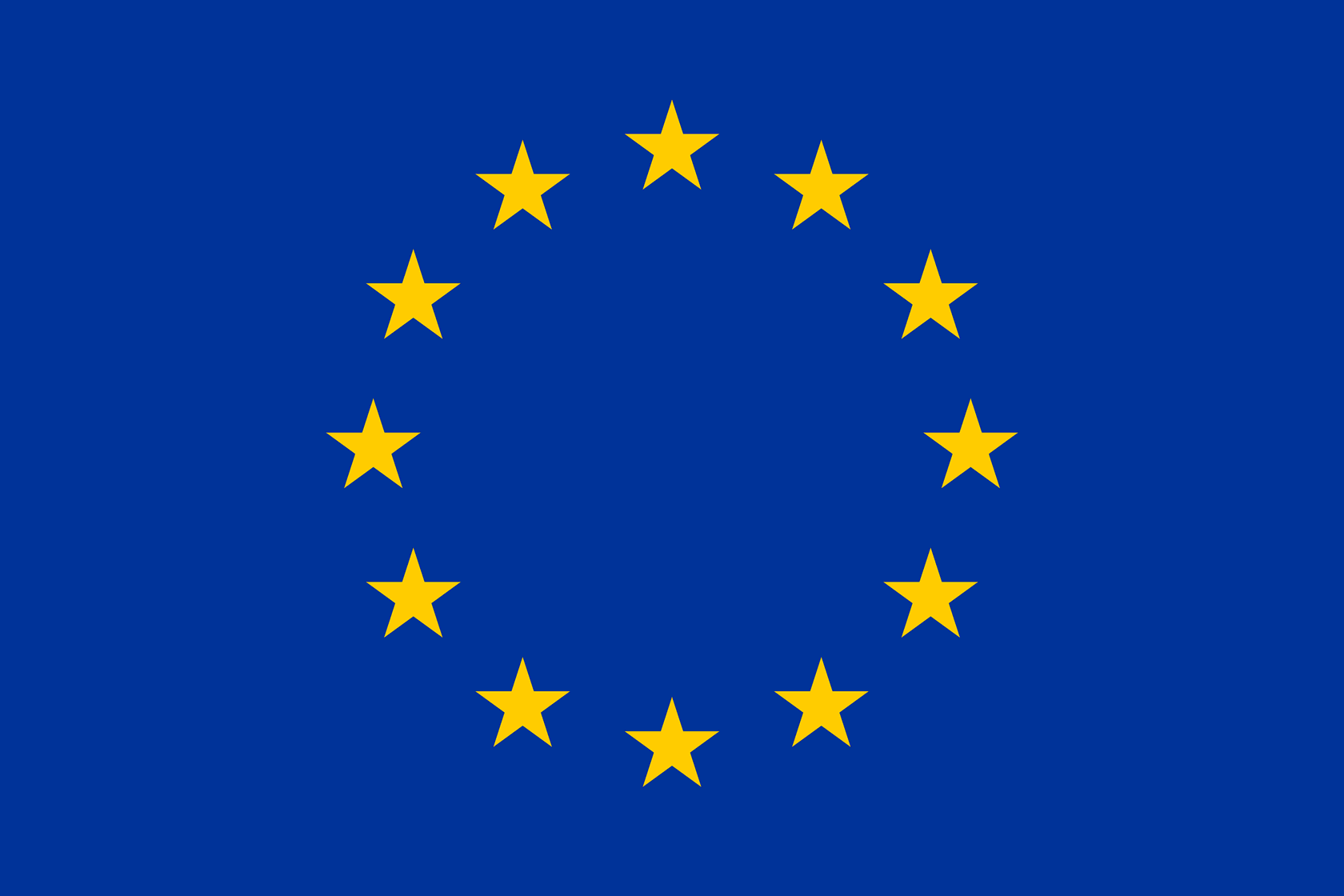Thessaloniki
text by ReROOT site researcher Charalampos Tsavdaroglou (UTH)
Edited by Cornelia Tippel (ILS)
Edited by Cornelia Tippel (ILS)

A large number of people on the move seek to cross northern Greece and Thessaloniki without being registered and documented by the country's authorities in order to cross the Balkans and apply for asylum in a Central or Northern European country. Due to their fear of detection by the authorities, their contact with the city and especially with the city center is limited, as well as their information about the available services and support infrastructures. Therefore, this platform sought to collect, map and record all available arrival infrastructures such as spaces of organizations and solidarity groups and, at the same time, employing participatory workshops, the safe and dangerous areas and routes in Thessaloniki were mapped. The outcome named MAP: Migrants Arrival Project was distributed to the people on the move in the area of abandoned train wagons to provide them with knowledge gathered in the course of the platform building.
The idea for the creation of the specific platform was based on the fact that a large number of people on the move seek to cross northern Greece and Thessaloniki without being registered and documented by the country's authorities so that they can then cross the Balkans and apply for asylum in a Central or Northern European country. This journey is extremely difficult as people on the move face risks such as push backs, abductions, threats and attacks from far-right residents and in case they are arrested by police authorities they will be imprisoned and deported to Turkey. For the above reasons, people on the move try to hide and guard themselves and upon their arrival in Thessaloniki they stay in invisible places such as in the area with the abandoned train wagons at the western entrance of the city. Due to the fear of detection by the authorities, their contact with the city and especially with the city center is limited, as well as they do not have information about the available services and support infrastructures.
Therefore, on this platform it was sought to collect, map and record all the available arrival infrastructures such as spaces of organizations and solidarity groups and at the same time with participatory workshops the safe and dangerous areas and routes in Thessaloniki were mapped. Then the product named MAP: Migrants Arrival Project was distributed to the people on the move in the area of the abandoned train wagons so that they know where they can navigate in safety and where are support organizations that can help to meet their basic needs.
Therefore, on this platform it was sought to collect, map and record all the available arrival infrastructures such as spaces of organizations and solidarity groups and at the same time with participatory workshops the safe and dangerous areas and routes in Thessaloniki were mapped. Then the product named MAP: Migrants Arrival Project was distributed to the people on the move in the area of the abandoned train wagons so that they know where they can navigate in safety and where are support organizations that can help to meet their basic needs.
Target groups
The platform is based and concerns mainly two categories of groups
- people on the move (newcomers who live in Thessaloniki for short periods of time and then seek to continue their journey to the next Balkan countries) as well as
- migrants that are living in Thessaloniki.
The platform is based and concerns mainly two categories of groups
- people on the move (newcomers who live in Thessaloniki for short periods of time and then seek to continue their journey to the next Balkan countries) as well as
- migrants that are living in Thessaloniki.

Lessons Learned and Open Questions
Balancing transformative actions and research aims (researchers’ positionality)
Researcher Relationship with Transformative Actions:
Challenging Methodological Nationalism:
The Role of Researchers in Understanding Urban Environments:
Mapping and Political Gestures:
Balancing transformative actions and research aims (researchers’ positionality)
Researcher Relationship with Transformative Actions:
- The relationship between researchers and transformative actions is a topic of ongoing discussion.
- Approaches such as participatory action research, scholar activism, and militant research explore this relationship.
- These approaches emphasize the need to address real social struggles and unresolved antagonism in research.
Challenging Methodological Nationalism:
- In critical migration studies, scholars like Anderson highlight the importance of challenging methodological nationalism.
- Methodological nationalism refers to assumptions that prioritize the nation-state as the primary unit of analysis.
- Researchers should critically examine how migration is studied and avoid depoliticization.
The Role of Researchers in Understanding Urban Environments:
- Researchers interacted with newcomers to explore perceptions of urban environments.
- They questioned notions of safety and danger for undocumented newcomers.
- The so-called “disobedient gaze” emerged, challenging conventional perspectives.
Mapping and Political Gestures:
- Researchers mapped newcomers’ daily routes, going beyond cartographic findings.
- These routes became political gestures, representing practices of “everyday” and “silent” resistance.
- The research platform served as a vehicle for transformative views.
Material and Quantitative Resources:
Social Relationships and Trust:
Inclusivity through Social Relations:
Platform Within Social and Political Context:
Human Contact Beyond Research:
- While available material and quantitative resources are crucial for platform implementation, they are not the sole determinant of success.
- Social relationships formed between researchers and participants play a pivotal role.
Social Relationships and Trust:
- Deeper social relationships and trust enhance the quality of platform elements.
- Trust fosters openness and meaningful contributions from participants.
Inclusivity through Social Relations:
- Social relations are essential for ensuring inclusivity.
- For instance, participatory cartographic workshops involve existing social bonds, which extend to new participants.
Platform Within Social and Political Context:
- The platform operates within the existing social and political framework.
- Researchers must recognize that research is inherently political and not neutral.
- In inhospitable contexts like Greece, researchers should actively challenge xenophobia, racism, and marginalization.
Human Contact Beyond Research:
- Conversations with newcomers go beyond research.
- These interactions become welcome encounters and gestures.
- Connecting with people seeking survival transcends the platform’s purpose.



